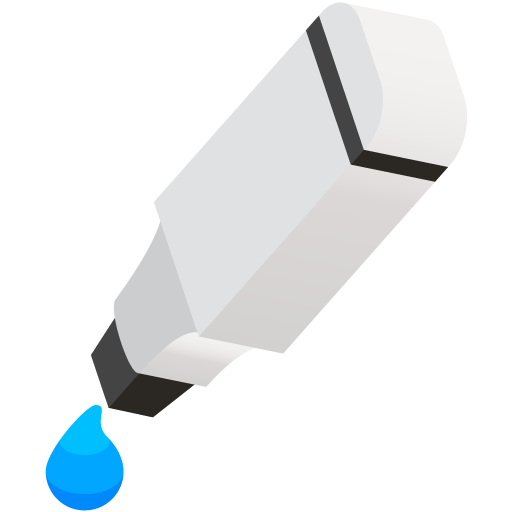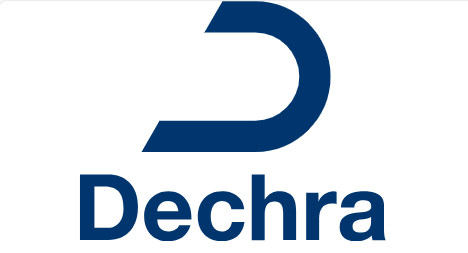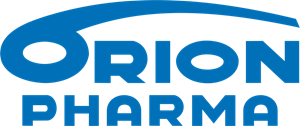Combination therapy
No results were found for your selected species
Effipro duo (40-60 kg)
ATC code
Species
Dogs (40-60 kg)
Indications
To be used against infestations with fleas alone or in association with ticks.
Against fleas:
Treatment and prevention of infestations by fleas (Ctenocephalides felis). One treatment prevents further infestations for 7 weeks.
Prevention of the multiplication of fleas by preventing flea eggs developing into adult fleas for 12 weeks after application.
The veterinary medicinal product can be used as part of a treatment strategy for the control of Flea Allergy Dermatitis (FAD) where this has been previously diagnosed by a veterinary surgeon.
Against ticks:
Treatment of infestations by ticks (Ixodes ricinus).
One treatment provides persistent acaricidal efficacy for 2 weeks against Ixodes ricinus, and for 4 weeks against Dermacentor reticulatus and Rhipicephalus sanguineus.
If ticks of some species (Dermacentor reticulatus, Rhipicephalus sanguineus) are present at the time of application, not all ticks may be killed within 48 hours.
Dose to be administered and administration route
Spot-on use.
Dosage:
Apply one pipette of 4.02 ml per dog for a dog weighing from 40 to 60 kg corresponding to the minimal recommended dose of 6.7 mg fipronil /kg b.w. and 2 mg pyriproxyfen/kg b.w.
|
Volume |
Dog weight |
Fipronil (mg) |
Pyriproxyfen (mg) |
|
0.67 ml |
2-10 kg |
67 |
20.1 |
|
1.34 ml |
10-20 kg |
134 |
40.2 |
|
2.68 ml |
20-40 kg |
268 |
80.4 |
|
4.02 ml |
40-60 kg |
402 |
120.6 |
For dogs over 60 kg the appropriate combination of pipettes should be used.
Method of administration:
Remove the pipette from the overblister. Hold the pipette upright. Tap the narrow part of the pipette to ensure that the contents are within the main body of the pipette. Break the snap-off top of the spot-on pipette along the scored line.
Part the pet’s coat on base of the neck before the shoulder blades until the skin is visible. Place the tip of the pipette directly against the skin and squeeze gently several times to empty the contents. If necessary the contents of the pipette can be administered at one or two additional point(s) along the pet’s back to avoid run-off or more superficial application to the hair coat, particularly in large dogs.

Drop stop system (the veterinary medicinal product is released only by pressing the body of the pipette).

One pipette provides a single treatment, with the possibility to repeat administrations on a monthly basis.
Consult your veterinary surgeon if the veterinary medicinal product fails to control the flea and tick infestation.
Adverse reactions
Dogs:
|
Very rare (<1 animal / 10,000 animals treated, including isolated reports): |
Application site reaction1 (e.g. Application site greasy fur2, Application site skin scaling2,3, Application site skin squamosis, Application site alopecia, Application site pruritus, Application site erythema, Application site skin discolouration) Generalised itching, Alopecia Hypersalivation, Vomiting Neurological disorder4 (e.g. Hyperaesthesia, Central nervous system depression, Neurological symptoms) Respiratory signs |
1 Transient
2 Cosmetic effect
3 Slight
4 Reversible
Reporting adverse events is important. It allows continuous safety monitoring of a veterinary medicinal product. Reports should be sent, preferably via a veterinarian, to either the marketing authorisation holder or its local representative or the national competent authority via the national reporting system. See the package leaflet for respective contact details.
Dispensing
NFA-VPS - Non-Food Animal – Veterinarian, Pharmacist, SQPReferences
SUMMARY OF PRODUCT CHARACTERISTICS
1. NAME OF THE VETERINARY MEDICINAL PRODUCT
Effipro duo 402 mg/120 mg spot-on solution for very large dogs
2. QUALITATIVE AND QUANTITATIVE COMPOSITION
One 4.02 ml pipette contains:
|
Active substances |
4.02 ml pipette |
|
Fipronil |
402.00 mg |
|
Pyriproxyfen |
120.60 mg |
|
Excipients |
|
|
Butylhydroxyanisole E320 |
0.804 mg |
|
Butylhydroxytoluene E321 |
0.402 mg |
For the full list of excipients, see section 6.1.
3. PHARMACEUTICAL FORM
Spot-on solution.
Clear, colourless to yellowish solution.
4. CLINICAL PARTICULARS
4.1 Target species
Dogs (40-60 kg)
4.2 Indications for use, specifying the target species
To be used against infestations with fleas alone or in association with ticks.
Against fleas:
Treatment and prevention of infestations by fleas (Ctenocephalides felis). One treatment prevents further infestations for 7 weeks.
Prevention of the multiplication of fleas by preventing flea eggs developing into adult fleas for 12 weeks after application.
The product can be used as part of a treatment strategy for the control of Flea Allergy Dermatitis (FAD) where this has been previously diagnosed by a veterinary surgeon.
Against ticks:
Treatment of infestations by ticks (Ixodes ricinus).
One treatment provides persistent acaricidal efficacy for 2 weeks against Ixodes ricinus, and for 4 weeks against Dermacentor reticulatus and Rhipicephalus sanguineus.
If ticks of some species (Dermacentor reticulatus, Rhipicephalus sanguineus) are present at the time of application, not all ticks may be killed within 48 hours.
4.3 Contraindications
Do not use in rabbits, as adverse reactions and even death could occur.
Do not use in cases of known hypersensitivity to the active substances or to any of the excipients.
4.4 Special warnings for each target species
Shampooing or immersion of the animal in water directly after treatment may reduce the duration of activity. The product remains effective against fleas for 5 weeks when the dog is shampooed at monthly intervals after treatment. If the dog requires shampooing, it is better to do so before treatment.
Water immersion repeated on two occasions post treatment did not affect adulticidal efficacy against fleas nor the efficacy related to the prevention of the development of flea eggs into adult fleas.
The influence of water immersion or shampooing of the dog on the efficacy of the product against ticks has not been evaluated.
At the beginning of the control measures, in the case of an infestation, the animal's basket, bedding and regular resting areas such as carpets and soft furnishings should be treated, with a suitable insecticide and vacuumed regularly.
To reduce environmental flea challenge, all animals living in the same household should also be treated with a suitable flea control product.
The product does not prevent ticks from attaching to animals. Transmission of infectious disease by ticks cannot be completely excluded if conditions are unfavourable.
Immediate efficacy has been demonstrated against Ixodes ricinus, indicating that ticks of this species are likely to be killed within 48 hours of product application. If Dermacentor reticulatus or Rhipicephalus sanguineus ticks are present when the product is applied, these ticks may not be killed within the first 48 hours.
Once dead, ticks will often drop off the animal. Any remaining ticks should be carefully removed, ensuring that their mouth parts are not left within the skin.
4.5 Special precautions for use Special precautions for use in animals
For external use only.
Animals should be weighed accurately prior to treatment.
In absence of safety data, the product should not be used in puppies less than 10 weeks old and/or weighing less than 2 kg.
Care should be taken to avoid the content of the pipette coming into contact with the eyes or mouth of the recipient dogs. In particular oral uptake due to the licking of the application site by treated or in-contact animals should be avoided.
Do not apply the product on wounds or damaged skin.
In the absence of additional safety studies, do not repeat the treatment at intervals of less than 4 weeks.
The use of the product has not been studied in sick and debilitated dogs.
Consult your veterinary surgeon before using the product if your dog is unwell or currently receiving any other veterinary treatment.
Inform your veterinary surgeon that you are using this product if s/he provides your dog with any other medication.
Seek veterinary advice if the product is accidentally ingested or comes into contact with your animal’s eyes.
Special precautions to be taken by the person administering the veterinary medicinal product to animals
The product may cause neurotoxicity.
The product may be harmful if swallowed. Avoid contact with skin and mouth.
Do not smoke, drink or eat during application.
In the event of accidental ingestion, seek medical advice immediately and show the package leaflet or the label to the physician.
This product can cause eye and mucous membrane irritation.
Avoid contact with skin, eye and mouth, including hand to eye contact.
In the case of accidental skin or eye contact, immediately and thoroughly flush with water. If skin or eye irritation persists, seek medical advice and show the package leaflet or the label to the physician.
Wash hands after use.
Treated animals should not be handled until the application site is dry, and children should not be allowed to play with treated animals until the application site is dry. It is therefore recommended that animals are not treated during the day, but should be treated during the early evening, and that recently treated animals should not be allowed to sleep with owners, especially children.
Keep the pipettes in the original packaging until ready for use and dispose of used pipettes immediately.
Other precautions
Fipronil and pyriproxyfen may adversely affect aquatic organisms. Dogs should be prevented from accessing streams and rivers for 48-hours following treatment (see also section 6.6).
The product may have adverse effects on painted, varnished or other household surfaces or furnishings. Allow the application site to dry before permitting contact with such materials.
4.6 Adverse reactions (frequency and seriousness)
Transient cosmetic effects such as wet appearance or slight scaling can occur very rarely at the application site.
According to the accumulated experience on these active ingredients within spot on pharmaceutical forms, transient cutaneous reactions at the application site as squamosis (scaling of the skin), local alopecia (hair loss), pruritus (itchiness), erythema (redness of the skin), skin discolouration) and general pruritus or alopecia may very rarely be observed after use. Hypersalivation, reversible neurologic symptoms as hyperesthesia (increased sensitivity to stimuli), depression and nervous symptoms may very rarely be observed.
Respiratory signs or vomiting might occur in very rare cases.
The frequency of adverse reactions is defined using the following convention:
- very common (more than 1 in 10 animals treated displaying adverse reaction(s))
- common (more than 1 but less than 10 animals in 100 animals treated)
- uncommon (more than 1 but less than 10 animals in 1,000 animals treated)
- rare (more than 1 but less than 10 animals in 10,000 animals treated)
- very rare (less than 1 animal in 10,000 animals treated, including isolated reports).
4.7 Use during pregnancy, lactation or lay
Laboratory studies using fipronil and pyriproxyfen have not shown any evidence of teratogenic or embryotoxic effect. The safety of the product has not been established in pregnant and lactating bitches. Consult your veterinary surgeon before using the product in pregnant or lactating bitches.
4.8 Interaction with other medicinal products and other forms of interaction
Do not use simultaneously with other flea or tick products which are applied directly on to the animal.
4.9 Amounts to be administered and administration route
Spot-on use.
Dosage:
Apply one pipette of 4.02 ml per dog for a dog weighing from 40 to 60 kg corresponding to the minimal recommended dose of 6.7 mg fipronil /kg b.w. and 2 mg pyriproxyfen/kg b.w.
|
Volume |
Dog weight |
Fipronil (mg) |
Pyriproxyfen (mg) |
|
0.67 ml |
2-10 kg |
67 |
20.1 |
|
1.34 ml |
10-20 kg |
134 |
40.2 |
|
2.68 ml |
20-40 kg |
268 |
80.4 |
|
4.02 ml |
40-60 kg |
402 |
120.6 |
For dogs over 60 kg the appropriate combination of pipettes should be used.
Method of administration:
Remove the pipette from the overblister. Hold the pipette upright. Tap the narrow part of the pipette to ensure that the contents are within the main body of the pipette. Break the snap-off top of the spot-on pipette along the scored line.
Part the pet’s coat on base of the neck before the shoulder blades until the skin is visible. Place the tip of the pipette directly against the skin and squeeze gently several times to empty the contents. If necessary the contents of the pipette can be administered at one or two additional point(s) along the pet’s back to avoid run-off or more superficial application to the hair coat, particularly in large dogs.

Drop stop system (the product is released only by pressing the body of the pipette).

One pipette provides a single treatment, with the possibility to repeat administrations on a monthly basis.
Consult your veterinary surgeon if the product fails to control the flea and tick infestation
4.10 Overdose (symptoms, emergency procedures, antidotes), if necessary
No serious adverse effects were observed in a safety study in 10-week old puppies treated with up to 5 times the maximum recommended dose 3 times at intervals of 4 weeks and with the maximum recommended dose 6 times at intervals of 4 weeks.
The risk of experiencing adverse reactions (see section 4.6) may however increase with overdosing, so animals should always be treated with correct pipette size according to bodyweight.
4.11 Withdrawal period(s) Not applicable.
5. PHARMACOLOGICAL PROPERTIES
Pharmacotherapeutic group: Ectoparasiticides for topical use, fipronil, combinations. ATCvet code: QP53AX65
5.1 Pharmacodynamic properties
Fipronil is an insecticide and acaricide belonging to the phenylpyrazole family. Fipronil and its metabolite fipronil sulfone act at ligand-gated chloride channels, in particular those gated by the neurotransmitter gamma-aminobutyric acid (GABA) as well as desensitising (D) and non-desensitising (N) channels gated by glutamate (Glu, unique invertebrate ligand-gated chloride channels), thereby blocking pre- and post-synaptic transfer of chloride ions across cell membranes. This results in uncontrolled activity of the central nervous system and death of insects or acarid.
Pyriproxyfen is an insect growth regulator (IGR) of the class of compounds known as juvenile hormone analogues. Pyriproxyfen sterilises adult fleas and inhibits the development of immature stages. The molecule prevents, by contact, the emergence of adult insects by blocking the development of eggs (ovicidal effect), larvae and pupae (larvicidal effect), which are subsequently eliminated. Following contact and/or ingestion by adult fleas, the molecule also acts by sterilising eggs during their maturation and before being laid. The molecule prevents contamination of the environment of treated animals with the immature stages of fleas
Combination of fipronil and pyriproxyfen provides an insecticidal and acaricidal activity against fleas (Ctenocephalides felis), ticks (Rhipicephalus sanguineus, Dermacentor reticulatus, Ixodes ricinus) in addition to preventing flea eggs developing into adult fleas.
5.2 Pharmacokinetic particulars
Following topical application of the product to dogs, under the normal conditions of use, fipronil and pyriproxyfen are well distributed across the haircoat of the dog by 24 hours.
The major metabolite of Fipronil is the sulfone derivative, which also possesses insecticidal and acaricidal properties.
The concentrations of fipronil, fipronil sulfone and pyriproxyfen in the haircoat decrease over time but are still detectable for at least 84 days after application.
After administration of the product, the plasmatic peak concentration is reached between 3 to 7 days for fipronil and between 7 to 14 days for fipronil sulfone. The plasmatic peak concentration of pyriproxyfen is reached between 1 to 3 days after administration.
The plasmatic concentrations of fipronil and pyriproxyfen decrease over time and the concentrations are quantifiable up to 50 days after application.
6. PHARMACEUTICAL PARTICULARS
6.1 List of excipients
Butylhydroxyanisole E320
Butylhydroxytoluene E321
Diethylene glycol monoethyl ether
6.2 Major incompatibilities
None known.
6.3 Shelf life
Shelf life of the veterinary medicinal product as packaged for sale: 3 years.
6.4 Special precautions for storage
Do not store above 30°C.
Store in a dry place.
Keep the blister pack in the outer carton in order to protect from light.
6.5 Nature and composition of immediate packaging
Transparent multi-layer plastic single-dose pipettes containing 4.02 ml obtained by thermoforming a transparent bottom complex (polyacrylonitrile-methacrylate, polypropylene or polyethylene-ethylene vinyl alcohol-polyethylene, cyclic olefin copolymer, polypropylene) and closed by heat sealing with a lid complex (polyacrylonitrilemethacrylate or polyethylene-ethylene vinyl alcohol-polyethylene, aluminium, polyethylene-terephthalate).
The boxes contain individual pipette(s) placed in overblister(s) made from polypropylene, cyclic olefin copolymer, polypropylene and closed with lid made from polyethyleneterephthalate, aluminium, polypropylene.
 Boxes of 1, 4, 24 and 60 pipettes (large boxes including envelopes intended for dispensing a reduced number of pipettes). [this sentence will be deleted in case the dispensing envelope cannot be accepted].
Boxes of 1, 4, 24 and 60 pipettes (large boxes including envelopes intended for dispensing a reduced number of pipettes). [this sentence will be deleted in case the dispensing envelope cannot be accepted].
Not all pack sizes may be marketed.
6.6 Special precautions for the disposal of unused veterinary medicinal product or waste materials derived from the use of such products
Any unused veterinary medicinal product or waste materials derived from such veterinary medicinal product should be disposed of in accordance with local requirements.
Do not contaminate ponds, waterways or ditches with the veterinary medicinal product or empty container as this may be dangerous for fish and other aquatic organisms.
7. MARKETING AUTHORISATION HOLDER
Virbac Limited
Woolpit Business Park
Windmill Avenue
Woolpit, Bury St Edmunds
Suffolk, IP30 9UP
United Kingdom
8. MARKETING AUTHORISATION NUMBER
Vm 11188/4031
9. DATE OF FIRST AUTHORISATION
20 June 2019
10. DATE OF REVISION OF THE TEXT
December 2020
Approved 18 December 2020
![]()
 TRUSTED SOURCE
TRUSTED SOURCE









